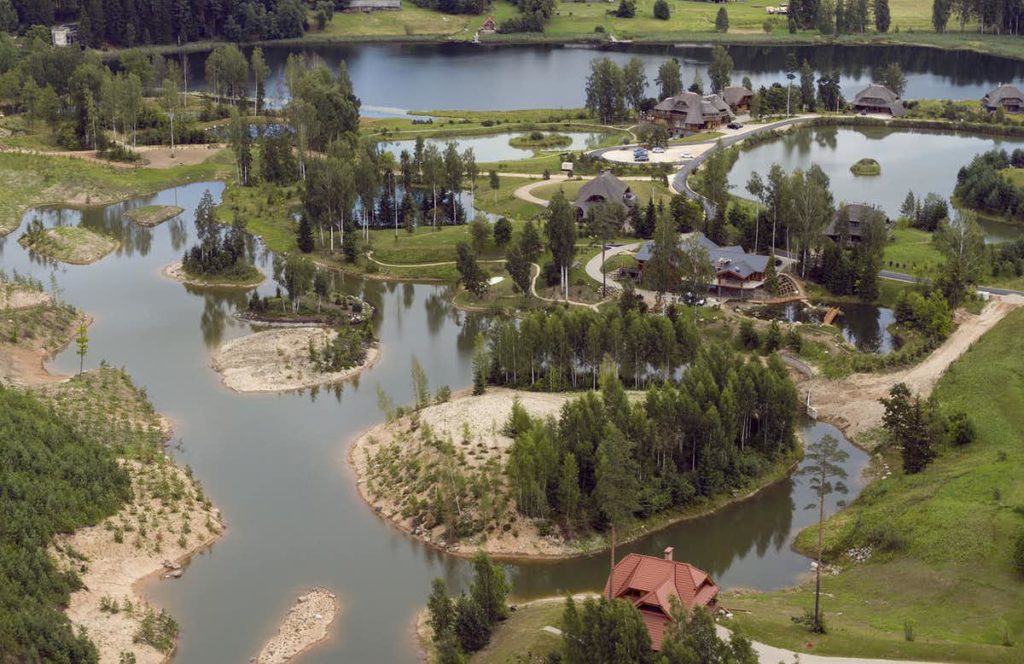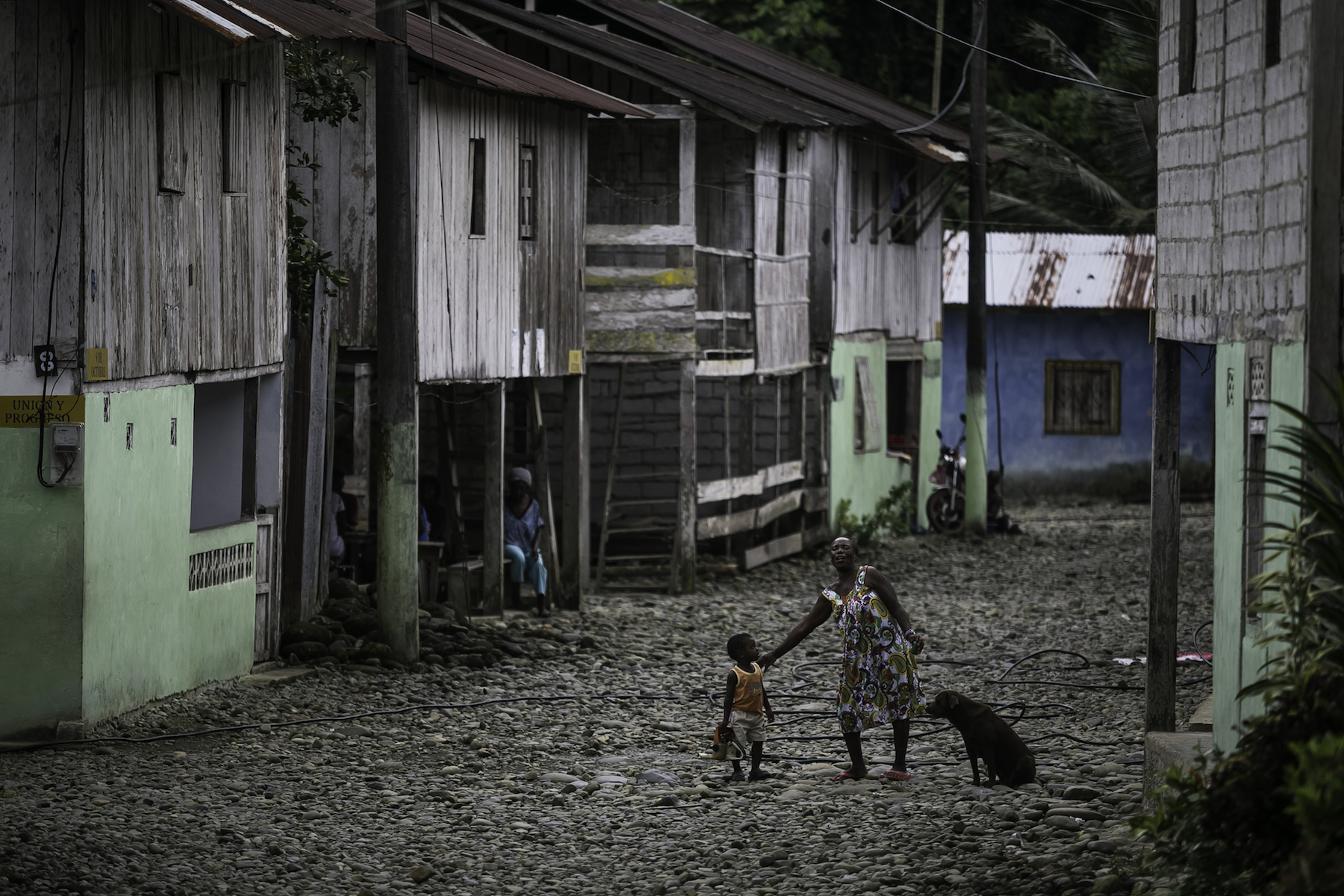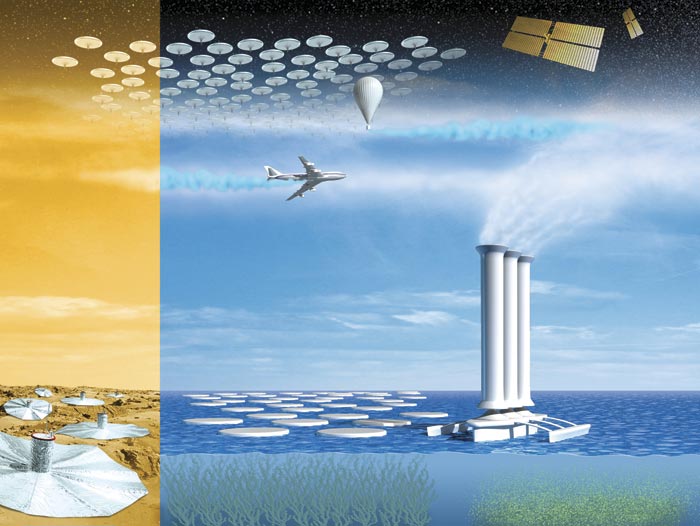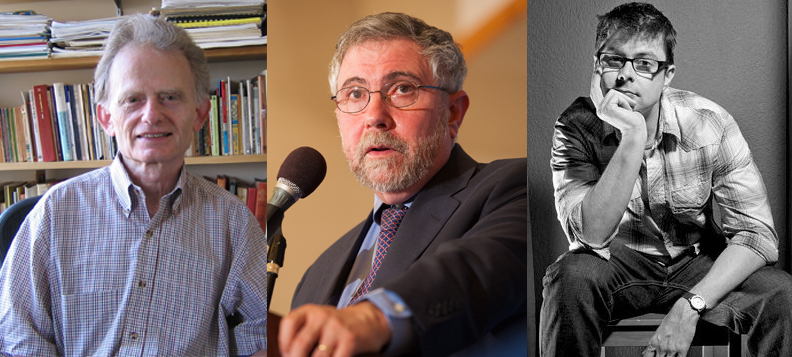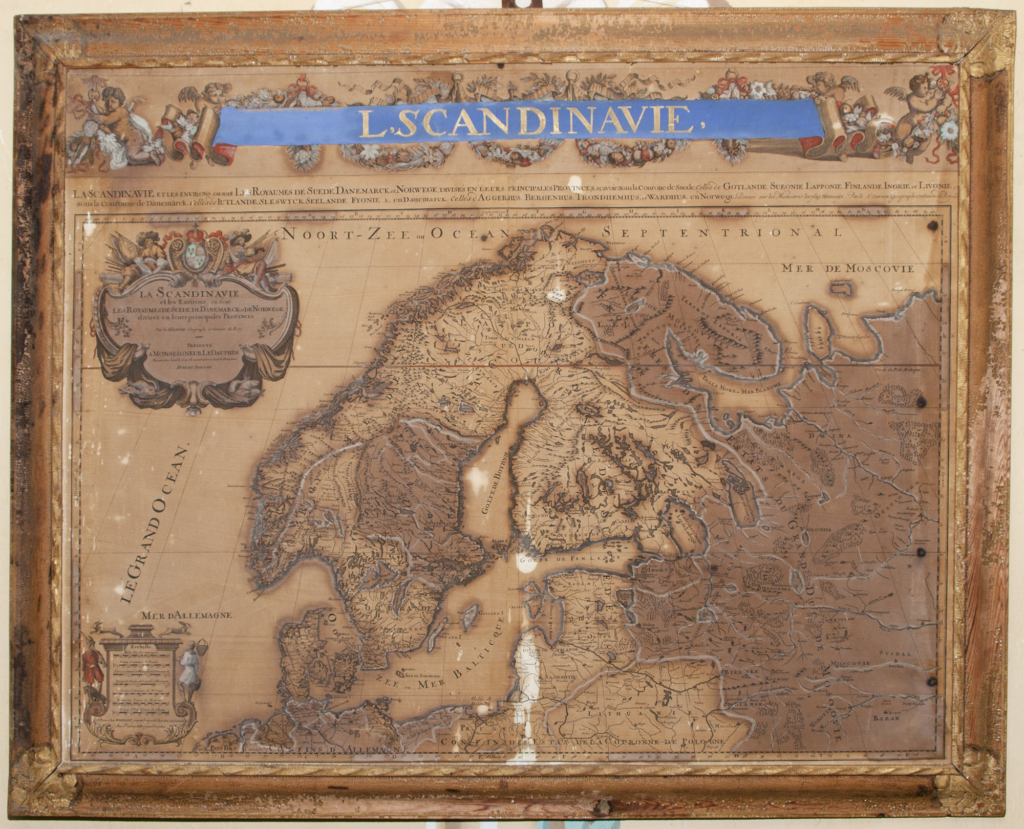
by Roger Blomqvist
Old colonial relations cast a shadow over today’s environmental politics. But when accusations of historical abuse pop up, some nations manage to fly below the radar in spite of extensive colonial involvement. Due to their so-called higher standards of behaviour they may even gain advantages in the global competition for control of natural resources. ‘Neutral’ Sweden is one of those nations.
In this essay, I weave together depictions of Swedish colonial history with recent political events. I thus hope to shed light on the way that professed concerns with sustainability in Sweden and Northern Europe interact with postcolonial power structures today. Much of the historical research that I build on is derived from two recent books which have contributed to a rethinking of Swedish and Scandinavian involvement in colonialism: the research anthology Scandinavian Colonialism and the Rise of Modernity: Small Time Agents in a Global Arena (2013), edited by Magdalena Naum and Jonas M. Nordin, and Våra kolonier, de vi hade och de som aldrig blev av (‘Our colonies, the ones we had and those never realized’; my translation), by Herman Lindqvist.
Double standards in Northern European environmental politics
An odd thing happened to the mainstream image of Northern European environmental politics following the wildfires in the Amazon rain forest last year. In August 2019 the G7, or Group of Seven, countries offered Brazil a $20 million relief effort—allegedly to reduce the risk of climate change by counteracting extensive forest fires in the Amazon. The offer was however turned down by the Brazilian president Jair Bolsonaro, who confronted the G7 leaders and said that they were treating Brazil ‘like a colony’. Bolsonaro eventually had second thoughts and accepted the aid, but the controversy nonetheless brought the question of colonial guilt and contemporary postcolonial power relations to wider public attention.
What makes Bolsonaro’s scoffing particularly interesting is that he directed it toward nations that tend to be depicted as humanitarian and climate heroes: Germany and Norway. Those two countries had withdrawn financial support from the Amazon Fund in order to pressure Bolsonaro’s administration to take action against the Amazon fires. While influential social scientists have celebrated Scandinavia, the Netherlands, and Germany as ‘clean and green’ utopias, Brazil’s right-wing president unexpectedly—and even against his own anti-environmentalist politics—opens the door to an environmental justice critique of Northern European countries. He accurately ascribes double standards to Norway and Germany, Norway as a whaling country and Germany as needing reforestation. At the same time, his own administration engages in even more absurd forms of anti-environmentalism—as when the director-general of the Brazilian National Institute for Space Research Ricardo Galvão was fired and labelled a ‘traitor’ after the Institute issued a report in 2019 on the acceleration of deforestation in the Amazon.
The clean and green façade of Northern Europe begins to crack as its lack of climate action at home is revealed.
Activists and NGOs used the attention which both the Amazon fires and Bolsonaro attracted to point out that the Brazilian president, although he himself wants to practice environmental destruction at home, does sort of hit the nail on the head when he criticizes Northern European countries for not wanting to change anything in their own backyards. As a Norwegian news site writes, ‘Norway’s rain forest preservation programs have not been without controversy, with critics suggesting Norway has opted to finance climate measures abroad instead of cutting more carbon emissions at home by curbing oil exploration and production.’ The clean and green façade of Northern Europe begins to crack as its lack of climate action at home is revealed. Also, the postcolonial interests of rich countries are still evident: the $20 million relief effort may contain a hidden agenda and climate care can serve as a perfect alibi for retaining economic influence—provided that the commitment to sustainability and fair distribution of welfare and resources is made credible. In 2018, the Brazilian vice president, general Hamilton Mourão, expressed suspicions about such professed commitments: ‘The rich world uses the climate debate to continue to dominate.’
There is a historical continuity to point to here: the poor have suffered the most from environmental impact and unjust conditions caused by the wealthy. And scientists project that this tendency will escalate with global warming, as a future scenario with extreme heat threatens the global South in particular, with consequences like decreased labour productivity, lower crop yields, and impoverished human health. And the ‘clean and green utopias’ of Northern Europe have a part in this unequal system. Equitable distribution of environmental load and economic benefits is not a core shareholder value in the global economy.
Sweden is one of the countries who are keen on business in Brazil. The Swedish Minister for rural affairs, Sven-Erik Bucht, went there in 2017 with major Swedish forestry actors and researchers, establishing relations for Swedish businesses under the guise of sustainability. The Amazon is a target for Swedish exports of technology and forestry know-how. Since Swedish forestry often includes criticized clearcutting, Greenpeace Sweden took the opportunity when the fires in the Amazon brought attention to deforestation to point to Swedish double standards when the country pressures Brazil to preserve the rain forest all the while replacing forests with tree plantations at a remarkable speed in Sweden. Since the same companies that are trying to gain access to Brazilian land are causing environmental harm back in Sweden, Greenpeace’s reaction against Swedish double standards could be taken even further. These double standards reside not only in the tendency to require better environmental protection in Brazil than at home, but also in how Swedish forestry actors would happily contribute to deforestation in the Amazon.
We can in fact identify a continuity here; a repeated pattern of what we might call Swedish colonialist neutrality.
So what is going on with all this? How can widely celebrated ‘clean and green utopias’ engage in such dubious practices? By looking at the role of Scandinavia, and in particular Sweden, in the colonial era, we can in fact identify a continuity here; a repeated pattern of what we might call Swedish colonialist neutrality.
Swedish colonialism in the ‘great olden days’ and today
Sweden’s ‘free lane’ into business profit in formerly colonized areas depends on the common perception that Scandinavian colonial violations were marginal, if they occurred at all. But however negligible the Swedish exercise of power has been, it is paradoxically depicted with great glamour. A telling example is the Swedish national anthem from 1844, including the patriotic stanza which begins ‘Du tronar på minnen från fornstora dar, då ärat ditt namn flög över jorden’ (‘You are enthroned on memories of great olden days, when honoured your name flew across the Earth’).
Many Swedes probably tune into the song with a sense of pride—most commonly at sport events—and a vague notion of its references to the Swedish Era of Great Power in the years 1611-1718. Sweden was then a colonizer, although admittedly on a smaller scale than Spain, Portugal, the Netherlands, Great Britain or France—and allegedly of a benevolent type.
But the Swedish Crown and power sphere were in fact heavily involved in the European colonization project with all its atrocities. This is convincingly shown in the anthology on Scandinavian colonialism from 2013 edited by Naum and Nordin. In more than a dozen close-up descriptions of colonial encounters, a continuous whitewash of Scandinavian history is revealed. The anthology displays Swedish involvement on several continents: from expansion up North to the New World, Africa, and Asia. In 2015 this book was succeeded by Våra kolonier in which popular historian Herman Lindqvist uncovers a strong Swedish ambition to develop a colonial role. Conclusions in the two books align: dreams of gold, ivory, sugar, spices, and tobacco triggered the Swedish search for and foundation of colonies from the early 17th century in North America, West Africa, and later the West Indies. Ships were built to export iron, wood, and tar, financing increasing imports.
Swedish iron was a key ingredient—mainly for arms production—in the infamous triangular trade. Dutch-born entrepreneur Louis De Geer was an important figure in this as the Swedish Crown granted him a monopoly on copper and iron trade (he later got the epithet ‘the father of Swedish industry’). A curious fact is that iron in his forges was cast into bars that suited the backs of donkeys (!) used for transportation in Africa, as an adaptation to the slave economy: bent bars were replaced by slaves. With Royal Swedish support he also established a trading post in Cabo Corso at the African Gold Coast. 1,500-2,000 slaves were shipped by Swedes over the Atlantic. Ethics were no obstacle. The European colonial attitude depended on racial supremacy. A Swedish pastor doubted openly that African slaves were human beings. A Lutheran bishop in Copenhagen proclaimed that slavery was a natural state for heathens and punishment for their sins.
The word ‘colonizer’ is seldom used in Swedish sources.
Sweden has successfully avoided scrutiny partly because of a widespread understanding that it never got any major colonies. The word ‘colonizer’ is seldom used in Swedish sources, historical or popular. But Sweden did have several colonies for quite some time. Baltic provinces were annexed in wars in the 16th and 17th centuries, staying under Swedish control for 150 years. Regions in Germany and Poland were occupied. Swedish trade relied on indentured peasants in those areas. If the brutality of Swedes is absent in Swedish sources, it is all the more present in German, Polish, and Baltic ones.

The Swedish leadership also aimed for America. A detailed colonial trade plan was formed and New Sweden was established in Delaware in 1638, challenging Spanish control. The Swedish governor got royal instructions to treat the ‘wild people’ well to gain their confidence. The Crown was hoping that ‘higher standards’ would convince them to withdraw from competing traders. And the Swedes managed to cooperate with the Lenape and Susquehannock nations for some time.
In New Sweden, forest Finns were forced (by updated legal restrictions in Sweden) to cultivate the colony with their ‘slash and burn’ practise. They were roughly treated and historians have even used the term ‘penal colony’. The use of indentured labour was similar to the infamous use of the same system in British plantations in the West Indies.
There is evidence that the Swedish governor actually wished to eliminate the Indigenous population in the barren colony. He applied for sufficient numbers of soldiers to do so. The proposal was however ignored by the Crown, probably because of the urgent need for war resources in Poland and elsewhere.
The Swedish Royal council also planned other settlements in Africa, the Caribbean, South America, and Asia in the 17th and the 18th century. But plans constantly failed, until Sweden at last obtained Saint Barthélemy from France in 1784. The Caribbean island became an important trade hub with slave trade as the main objective. This trade relied on Swedish ‘neutrality’ in European wars.
It is revealing as well that leading Swedish merchants sold iron (for weaponry) to rebellious forces in the American War of Independence.
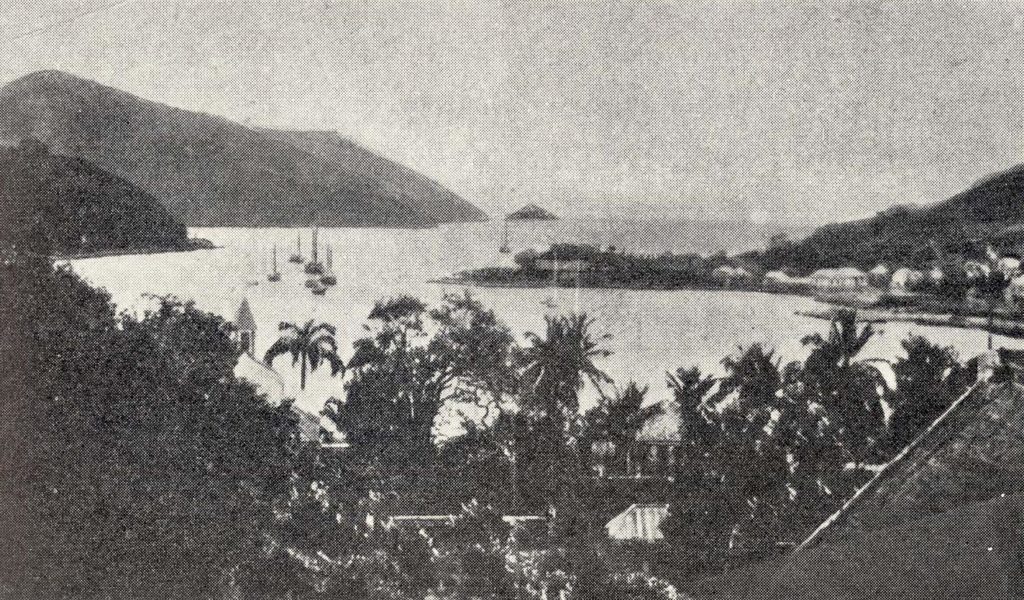
Back in Europe, the discovery of silver in Lapland in the 1630s triggered the Swedish Crown’s expansion north into Sápmi. In centuries to come, resources like fur, game, and minerals were extracted—and the Indigenous Sámi were ‘civilized’. The colonial attitude was obvious: Chancellor Oxenstierna referred to the northern parts of Sweden as ‘our India’. The ultimate purpose was to displace the Sámi people and deny them their independence and land rights.
The Swedish presence through settlers, bailiffs, entrepreneurs, and clerics in Lapland has not been seen as colonial domination by historians until the last few decades. Instead, terms like agricultural expansion, Forest Sámi assimilation, domestication, or civilizing have been used. But the compulsory boarding school attendance (with Christianity lessons) for Sámi children cut off from their families is not essentially different from the Belgian education of natives in the Congo or North American examples such as the Brafferton Indian School in Virginia.
Mining interests have repeatedly collided with reindeer herding and settlements.
Furthermore, the colonial legacy in Sápmi is still evident today. There are long-standing conflicts about land use in much of Sápmi, often in connection to the environmental impact of extractive industrial projects. For example, mining interests have repeatedly collided with reindeer herding and settlements. At the present time mining entrepreneurs, including several multinational companies, are searching for rare earth metals and iron, exploitation that is marketed by companies (and the government) as environmentally and socially beneficial because Swedish environmental protection and working conditions are superior to Chinese ones. In all this, the Sámi appear to have no say.
One land use conflict is currently tried in the Swedish Supreme Court. The dispute concerns who should administrate hunting and fishing rights on the grazing lands of the reindeer herding community of Girjas: the Sámi community or the Swedish government. Girjas has won in the District Court and the Court of Appeal. The Supreme Court’s decision will likely serve as a precedent in similar cases, meaning that it can have far-reaching effects on how Indigenous land use and land rights are interpreted by Swedish courts in the future.
In the court proceedings, surprisingly blunt statements have been made by representatives of Swedish authorities about the Sámi as ‘inferior’, a characterization which echoes the old colonial depiction of Indigenous peoples. Throughout history many Sámi people have been hurt, humiliated, and oppressed by Swedish authorities. When the well-known Sámi public figure Johannes Marainen was recently interviewed in a Swedish newspaper, he concluded that ‘We Swedes are quick to engage when people in other countries are oppressed, but we have not really cleaned up in front of our own door.’ This is not the least apparent in the Swedish government’s continual restriction of who has the legal right to call themselves Sámi on ‘Swedish’ territory: reindeer owners of ethnic Sámi origin. All other Sámi people—like fishing and hunting Sámi—are by Swedish definitions not Sámi! The self-imposed governmental right to define, acculturate, and segregate the Sámi people is largely unbroken since colonial times.
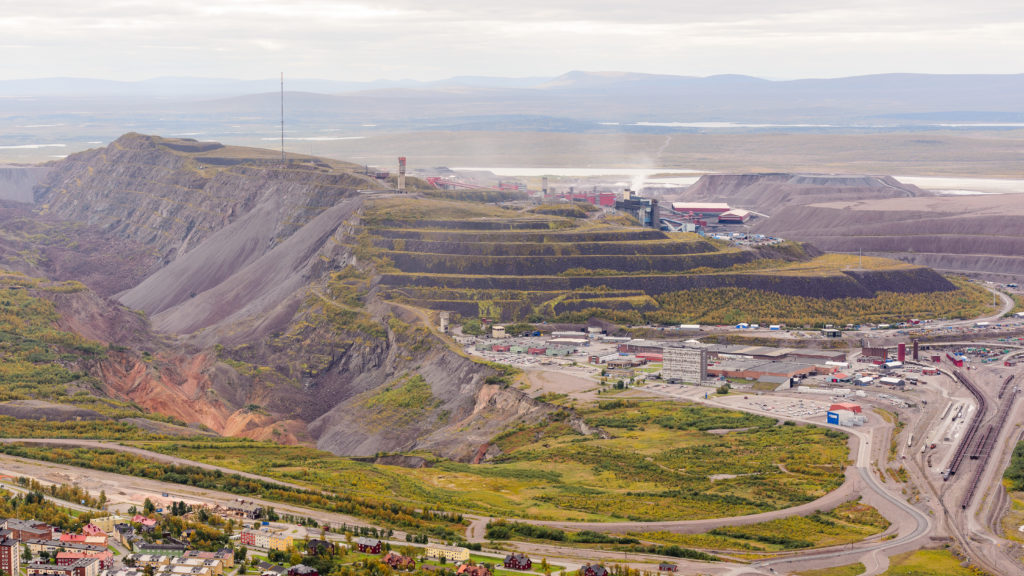
Arild Vågen, CC BY-SA 4.0
Scandinavian peculiarities within the European colonial project
In a discussion of colonialism in Scandinavia, it should be noted that Denmark maintained even more widespread presence in colonies around the world than Sweden did, in Africa, Asia, and the West Indies. Also, Denmark tried to control the North, with its whaling and fisheries, in a ‘colonial union’ with Iceland, North Atlantic Islands, and Greenland. The exploitation of Greenland has been similar to Swedish expansion in Sápmi. Greenland still remains Danish, with a restricted autonomy. American president Donald Trump recently made a surprising announcement of the intention to buy Greenland, demonstrating how strategically and economically attractive land areas still are seen as available for purchase. But the neocolonial bid was declined by the Danish prime minister. Following the old colonial pattern, the islanders themselves were not consulted.
Heavy violence was not a part of Scandinavian colonialism, at least not to the same extent as in British, Spanish, French and later German rule. But one of the most long-lived slave revolts in the Caribbean actually occurred in the Danish colony of St. John in 1733. For six months a group of slaves battled and killed Europeans and slaves of other origin, until French soldiers violently ended the revolt. Colonial competitors would often unite in this manner against enemies who threatened the colonialist structure.
Another difference between Scandinavian oversees colonies and those of other European nations was that the numbers of Scandinavian settlers in the colonies were on the whole few. However, this doesn’t mean—so Naum and Nordin write in the introduction to their anthology—that the colonies were negligible in geo-economic terms. The colonial purposes were similar to those of other European powers:
Scandinavia’s colonial expansion was motivated by and involved particular economic thinking, mercantilist drive for profit (to sell dear and buy cheap) and balancing national economies. Furthermore, it made use of the principles of natural law, which stipulated universal rights to trade, travel, explore and settle in foreign lands and justified violent actions if these rights were denied.
Naum and Nordin show how the quest for economic growth attracted Dutch capital and workforce to Scandinavia, bringing industrialization as well as capitalism. Books were written about the usefulness of trade and the need for founding colonies. Sugar refineries were built in Stockholm and Gothenburg. Swedish herring was traded as food for slaves. Merchants offered shipping of slaves to French colonies. Expeditions to America were made, even secretly in war time.
Swedish neutrality turned out to be a strategic position and to offer competitive advantages in relation to colonial superpowers at war.
The Swedish Crown, merchants, and political leadership shared a Eurocentric worldview and supported the right to conquer, dominate, and civilize in the name of superiority and technological advancement. But there was also a specifically Swedish twist to colonial ideology: Swedish neutrality turned out to be a strategic position and to offer competitive advantages in relation to colonial superpowers at war. When Britain and the Netherlands were fighting, Sweden exported cannons to the Dutch and iron for weaponry to the Brits. France could, when fighting Britain, rely on Swedish shipping of smuggled slaves, weaponry and other goods in the Caribbean. Also, hundreds of US trade ships managed to avoid customs by sailing under Swedish flag—and thus Sweden could maintain the lucrative Saint Barthélemy trade traffic.
There seems to be a line of continuity in Swedish ‘neutrality’ goodwill from colonial times up to this day. When defending delicate business agreements, Swedish rulers are well aware of the strong link between ‘nonprofit’ trademarks and the ability to secure market shares.
The self-image of Sweden as a peace-loving world conscience of human rights rhymes badly with Swedish arms exports. The last few decades there has been a public debate on exports to dictatorships and regimes at war—though it is at least not, unlike in the ‘great olden days,’ a question of illegal smuggling. On the contrary, the companies and the government take care to emphasise the morally responsible nature of the Swedish arms industry, using foreign policy watchwords like ‘equality,’ ‘freedom of speech,’ and ‘press freedom’. Trade is promoted by professing high standards of human rights and progressiveness.
But whatever ideals are invoked, Swedish exports of military equipment are frequent to countries where essential freedoms and rights are absent. The Swedish company SAAB recently delivered airborne systems of radar surveillance to United Arab Emirates. The suppression of human rights in the Arabic autocracy was never questioned. Amnesty noted that SAAB does little or nothing to check if delivered equipment is used in war crimes or oppression.
The ongoing SAAB delivery of 36 fighter aircraft to Brazil causes no troubling debate in Sweden. But when exports to warring countries are highlighted the government is forced to act; recently exports to Turkey were stopped because of the war in northern Syria (the contents of the exports were secret, however—protected by law).
Continuing on or contesting colonial relations
As suggested earlier, ‘climate action’ is becoming another useful sales argument for rich countries like Sweden. But when it comes to climate offsetting, rich countries gladly export it. Swedish funds support tree plantations in Kachung in Uganda in a project which has meant that local farmers have been forced to move, thus losing their small income. The project has even been considered a form of ‘landgrabbing.’ Now the farmers cannot afford to send their children to school; some even starve. Ugandan David Kureeba, chief at the National Association of Professional Environmentalists, called this ‘climate colonialism’ in a major Swedish newspaper. The colonial pattern is there, in compensations for emissions of carbon dioxide as well as in exports of garbage to Africa. In a similar case, it has been revealed that Swedish government agencies have bought carbon offsets in Brazil from a multinational corporation that has now been sued for poisoning the land of the Guarani people. The offsets were bought to compensate for air travel by employees at agencies like the Government Offices and the Environmental Protection Agency.
Another example of Swedish ‘high standards’ being more like double standards can be found in the story of the Ethiopian/Swedish cardiologist Fikru Maru. In 2013 he was imprisoned in Ethiopia, where he was detained for five years without a trial, falsely accused of bribery. His daughter—a Swedish resident—was informed by the Swedish Foreign Ministry that his prolonged detention time could not be questioned, since Swedish detention restrictions are lacking too (UN, the European Council, and several NGOs have criticized this). It would therefore be inconsistent to put pressure on Ethiopia. But alas, there were other reasons to be silent: Sweden was depending on Ethiopian support for a coveted seat on the UN Security Council and did not want to annoy Ethiopian colleagues by criticizing unlawfulness. This is revealed in a Fikru Maru biography which came out in October 2019.
As we have seen, there is reason to conclude that Swedish ‘higher standards’ to at least some extent have been tactical more than factual—a strategic colonialist neutrality. Some may even call Sweden’s world conscience rhetoric hypocritical. In any case, regardless of how one interprets Swedish neutrality, it is a fact that Sweden fully participated in the colonial expansion and supported it; colonies added to the power and glory of those ‘great olden days’ that are commemorated in the national anthem.
There has been no decolonizing moment during which Sweden has had to rethink its legacy. But some are trying to change this.
What differentiates Sweden from, for example, Britain and France is that there has been no decolonizing moment during which Sweden has had to rethink its legacy. But some are trying to change this. Swedish artist Carl Johan De Geer, a descendant of the industrialist Louis De Geer mentioned earlier, designed an art exhibition in 2019 (in Norrköping Art Museum) to discuss colonial guilt. De Geer wants to process the past in a way Swedish schools and art never have. For him, the triggering factor was his own encounter a few years before with a descendant of a slave sent to Brazil by his forefather (!).
The Church of Sweden also calls for a rewriting of history: ‘Sweden must deal with its historical debt to the Sámi,’ Archbishop Antje Jackelén officially declared in 2016, aware of the Swedish lack of international credibility due to the state’s and the Church’s treatment of the Sámi. As part of the Church’s self-examination several books have been published, including one with scientific white papers. The Church supports the Sámi Council’s request for a Truth and Reconciliation Commission, similar to the one in Canada, but the Swedish national parliament has as of yet failed to act on this.
Other states have at least partly begun to deal with their guilt. Germany is perhaps the best role model. Its World War II atrocities including the Holocaust have caused a processing in literature, art, education, and public debate. This has been termed ‘Vergangenheitsbemächtigung’, i. e. the processing of the past, and may be the key to Germany’s remarkable ethical recovery in the eyes of the world. But at the same time, the immense German colonial abuse in Africa in the late 19th and early 20th centuries has largely remained unexposed. Germany’s unwillingness to owe up to its colonial past is evident in the strained relations between Germany and Namibia (formerly German Southwest Africa) as the countries are five years into unsuccessful negotiations of the terms of an official apology and compensation from Germany for the genocide of 1904-1908.
It is disheartening (although perhaps not surprising) that there is a similar absence of processing of historical crimes in current superpowers. In Russia, Stalin is idolized to this day by one-eyed history writing—spelled out even by president Putin, the new ‘tsar’—despite all Soviet atrocities. Notable literature by Nobel Prize winners Alexandr Solzhenitsyn and Svetlana Alexievich uncovers a broader picture, but has not had an impact on the history that is told by the state. In China, the Communist Party nurtures a leadership cult around Mao Zedong as part of the government’s effort to legitimize continued power concentration and repression. And the one-sided description of the conquest of America, which glosses over genocide and traumatization of Indigenous peoples as well as the atrocities of the slave economy, plays a role in continued racism in the U.S. in the 21st century.
Any benefits that can come from the infrastructures and technologies of modern, globalized society will be effectively undermined by continued abuse and uneven distribution of wealth. In a world of increasing inequalities, where material wealth is concentrated in fewer and fewer hands and environmental load is placed disproportionately on the poorest, there is certainly a need for both processing of colonial guilt and a decolonization debate.
If history is unprocessed and allowed to repeat itself, ‘clean and green utopias’ like Sweden can continue to use their good reputation and depict themselves as ‘neutral’ actors to get strategic advantages in global trade. A scrutiny of historical roles in the colonial era shows how the same old patterns are at work. Although political control over vast colonies is history, economic structures ‘invisibly’ serve the same function (and in a way that is often cheaper than managing empires). Today formerly colonized regions largely depend on foreign company investments to develop a role in global trade. Differentiation of production is driven by market laws; cheap labour and access to raw materials are essential to make post-colonial wheels spin. Environmental harm is part of the equation. And in this postcolonial world economy, Sweden uses the same strategies to promote its economic interests as during the era of European colonial expansion.
Former colonial powers have a responsibility both for their material impact on the planet and the ideologies they enforce.
The possibilities of climate action
So where does all this leave us? Apart from scrutinizing their colonial history and identifying repetitions of historical patterns in the present, how might Scandinavian countries approach decolonization? This is a complex question which I can barely begin to answer here. I will say this though: we need to question the idea of economic growth as an ultimate bringer of welfare for all. In a world experiencing the devastating effects of climate change, this idea is less plausible than ever: as excessive consumption by a world minority threatens all of humanity’s existence, there can evidently be no equality unless wealth is distributed differently across the globe. This means that former colonial powers have a responsibility both for their material impact on the planet and the ideologies they enforce. Sweden—with its ‘higher standards’—is one of those countries. To advocate a greenwashed variety of ‘business as usual’ is to preserve existing power relations, instead of questioning vested interests. Selling Swedish fighter jets to Brazil and oppressing Sámi people at home while telling Bolsonaro to respect Indigenous rights—cashing in and washing our hands—is certainly not good enough.
But things can change. Slave trade and slavery were abolished as a result of widespread resistance and popular movements. It took centuries, but it happened.
We are now witnessing increasing pressure to change economic and political goals in an effort to counteract climate change. This may be the beginning of another dramatic shift of paradigms—if double standards hiding and justifying short-term profit interests do not stand in the way.
NOTE: Shortly after the publication of this text, the Swedish Supreme Court (Högsta Domstolen) ruled in favour of Girjas reindeer herding community against the state. The court’s decision was unanimous.
Many thanks to Rut Elliot Blomqvist for eminent editing and language revision.
Roger Blomqvist is a retired current affairs reporter/researcher and producer of “life philosophy” programs at Swedish public radio (Sveriges Radio), presently a university student of history and culture.





